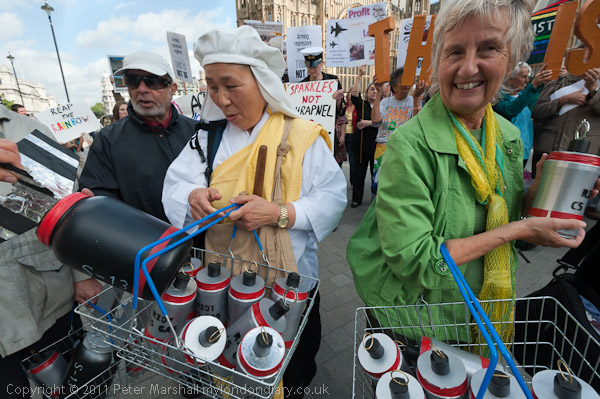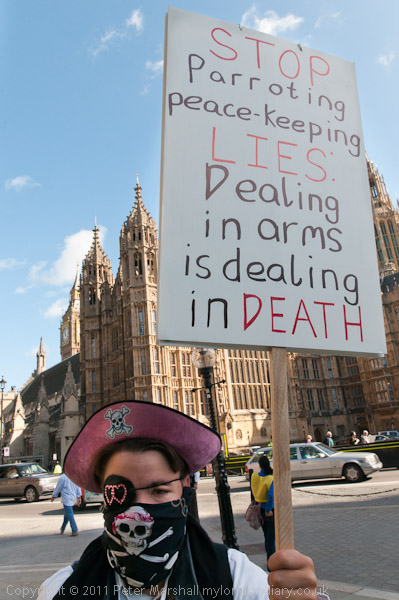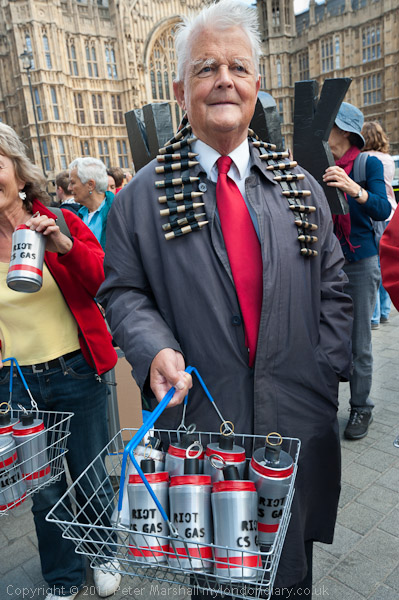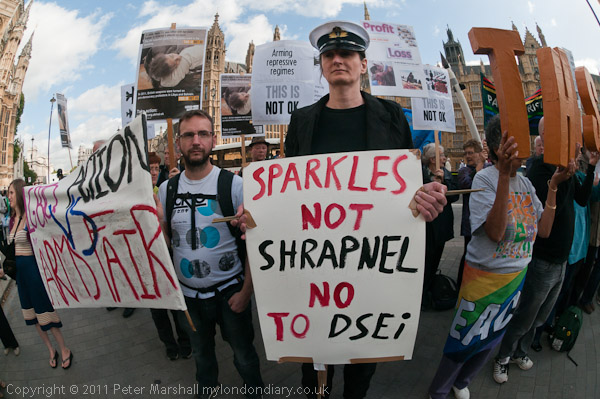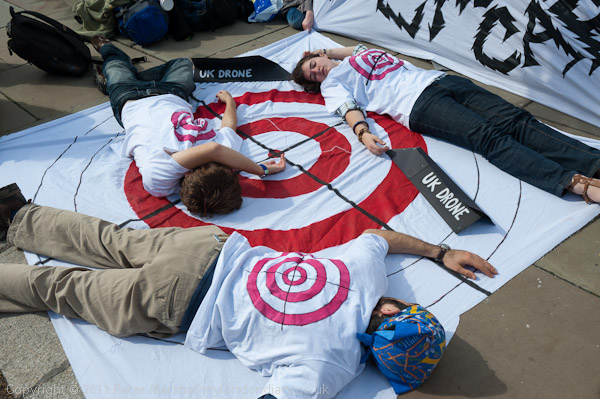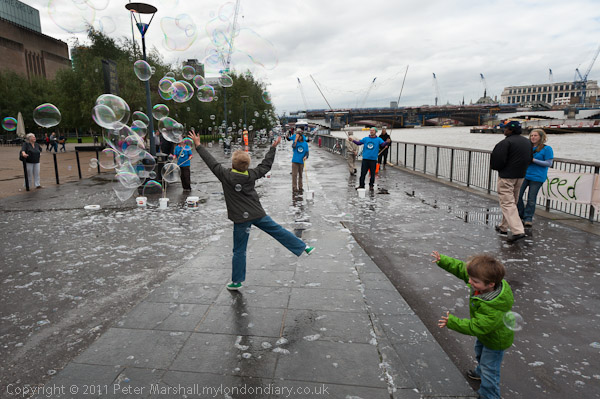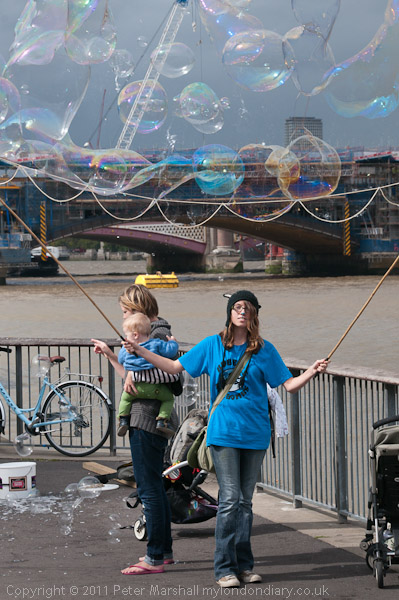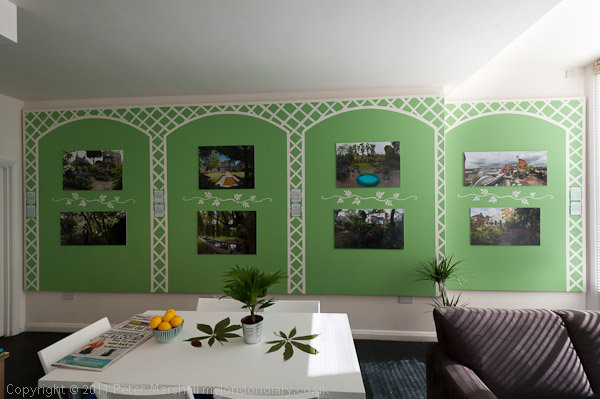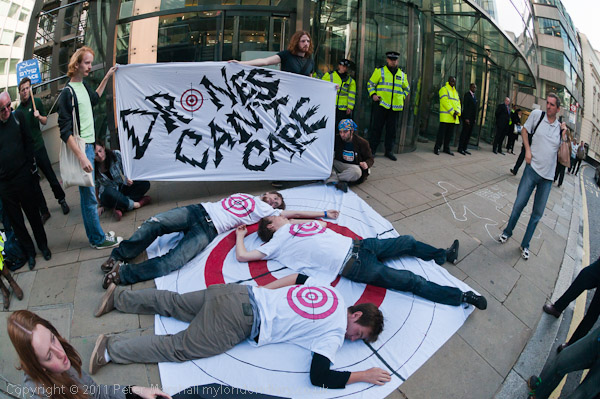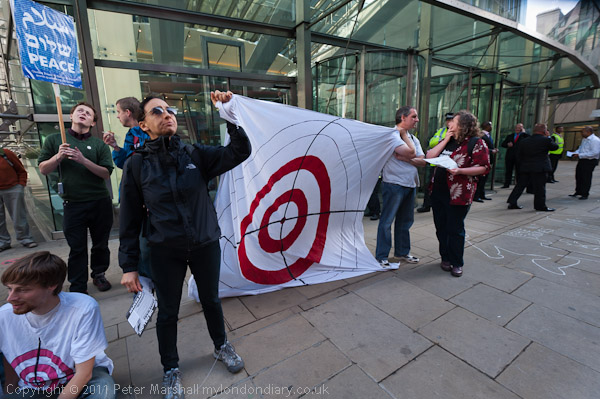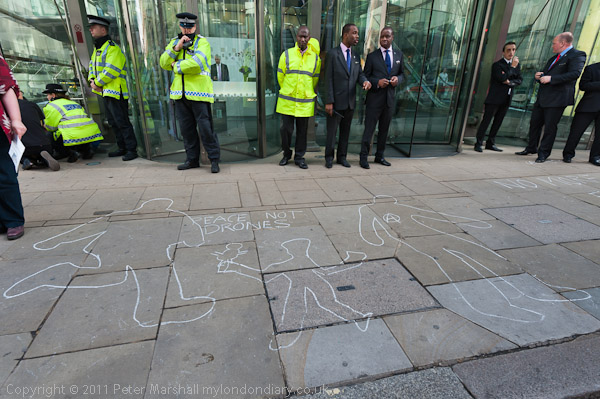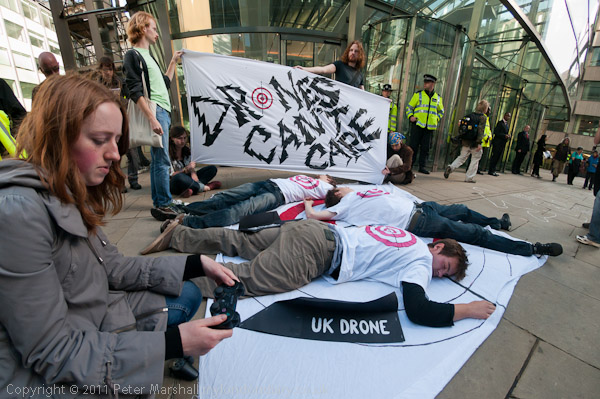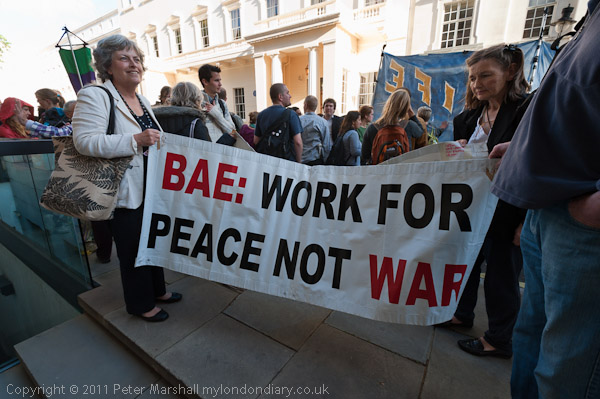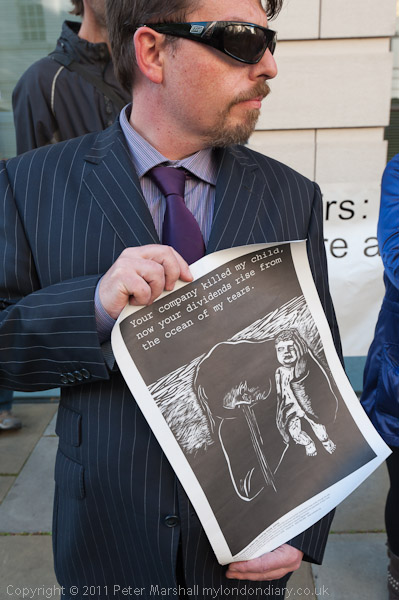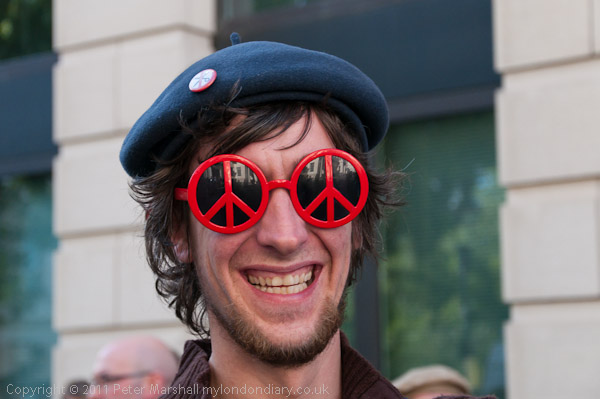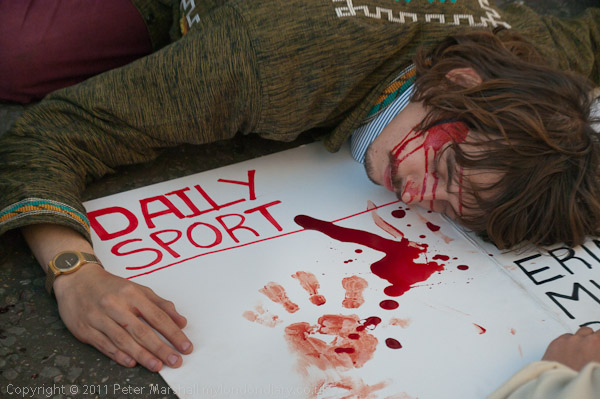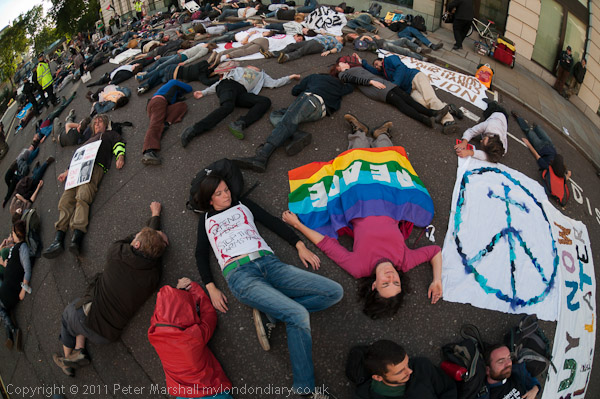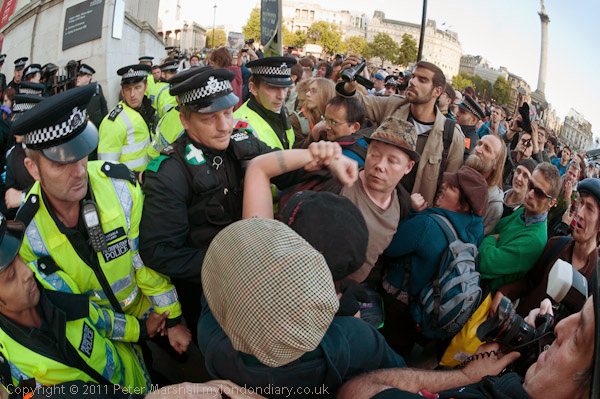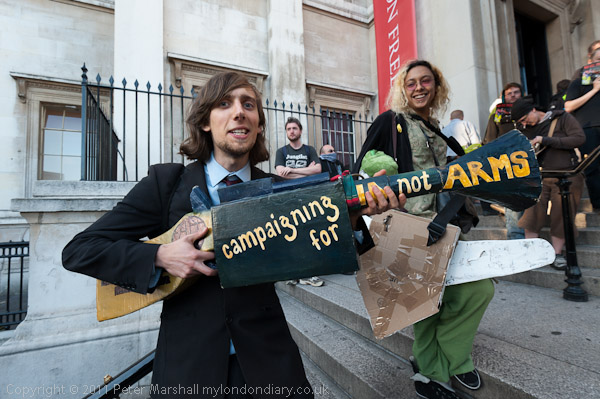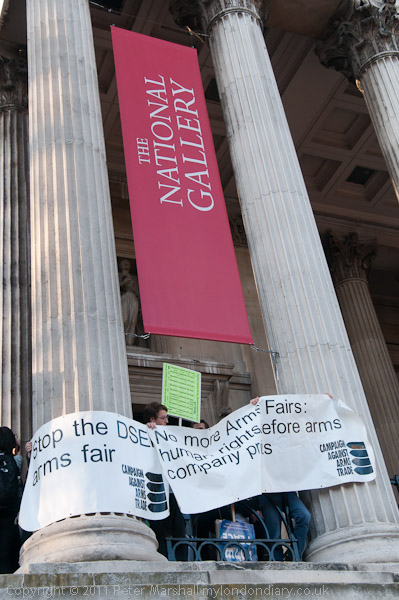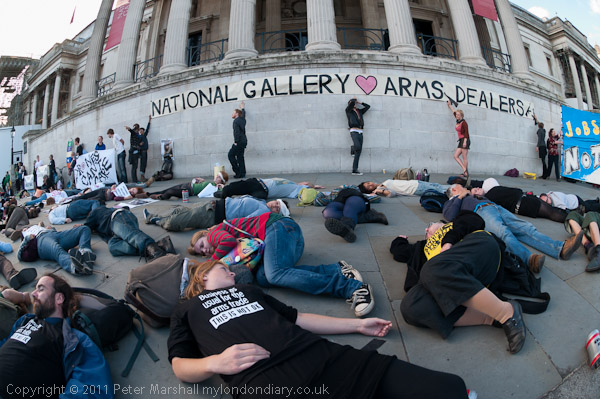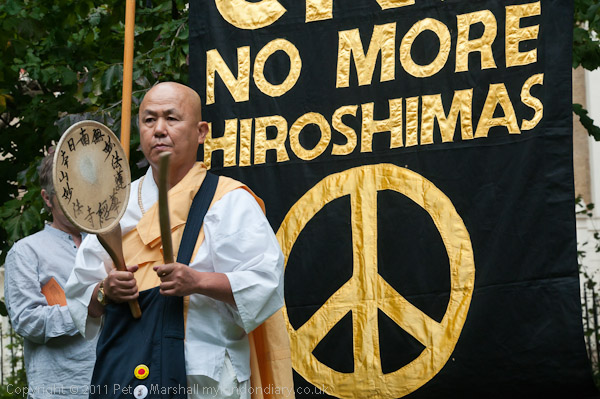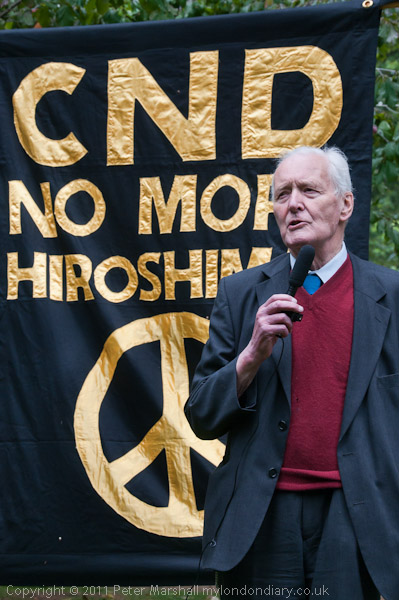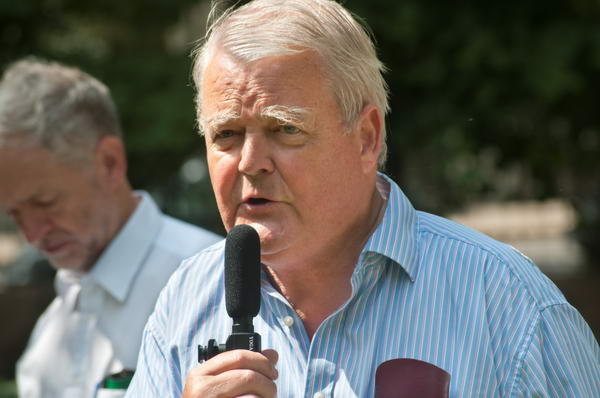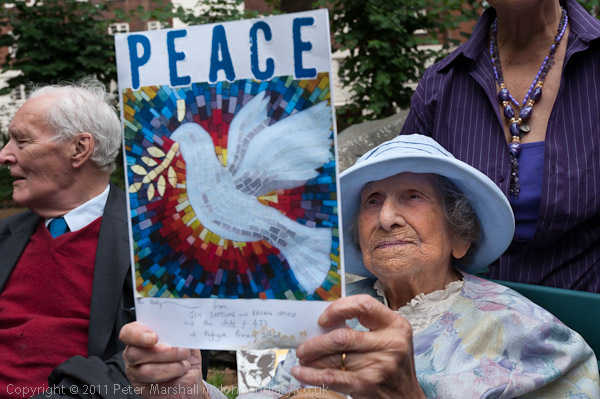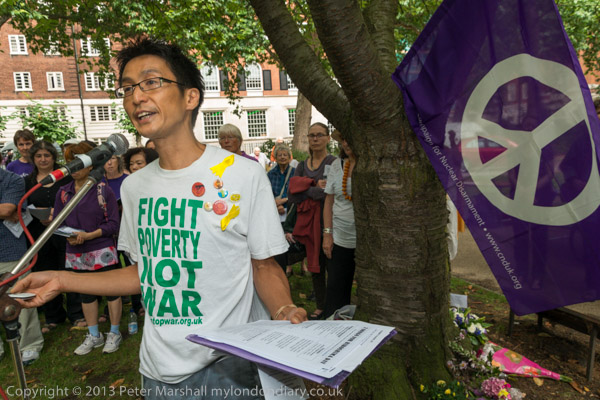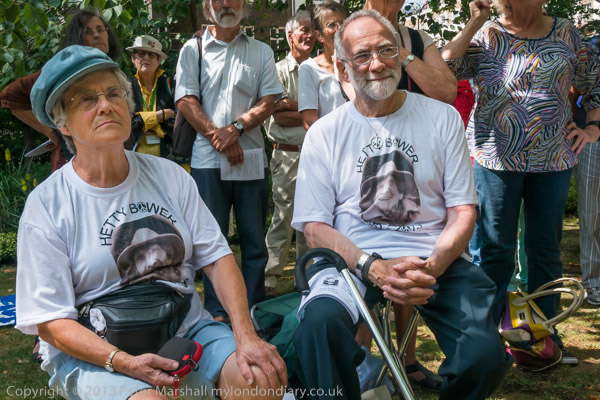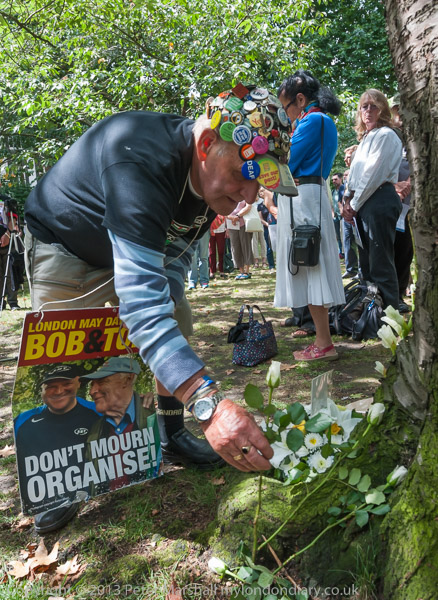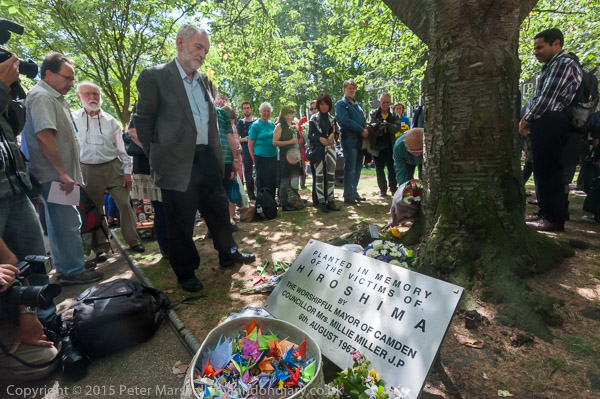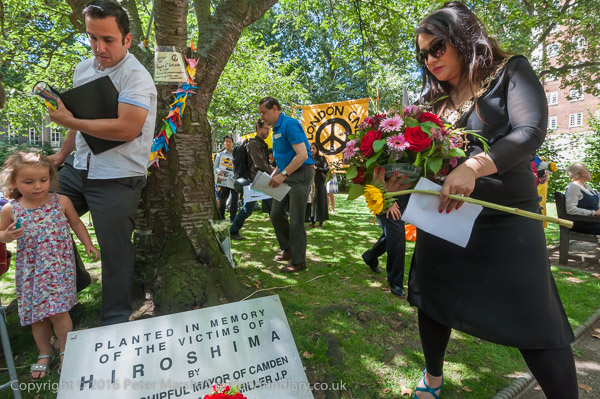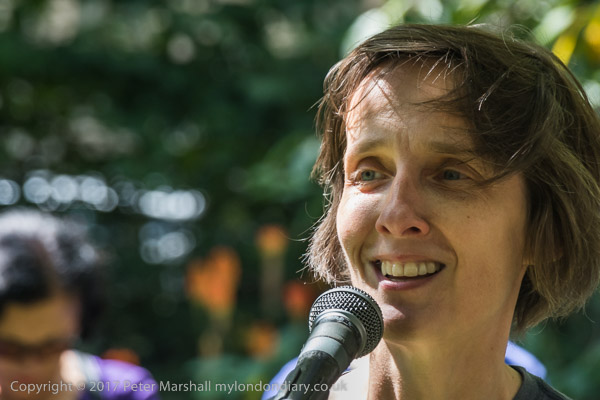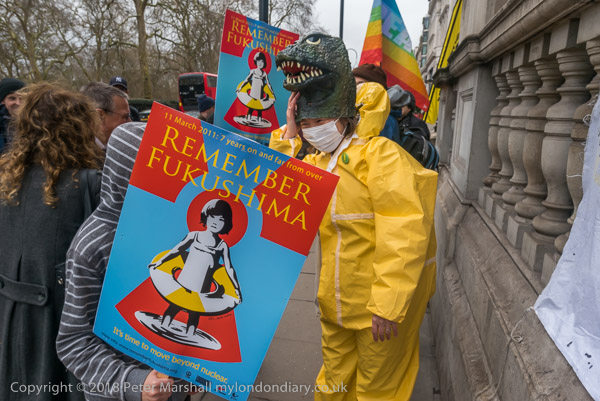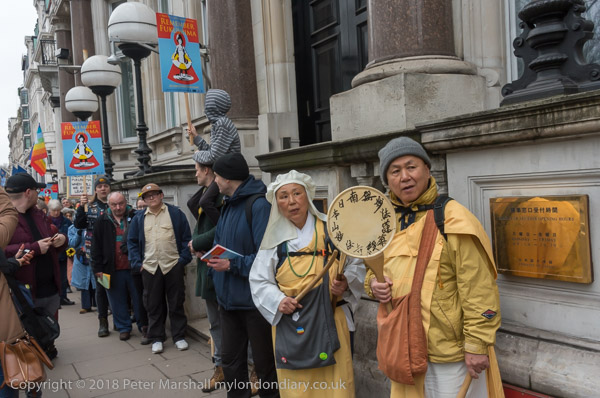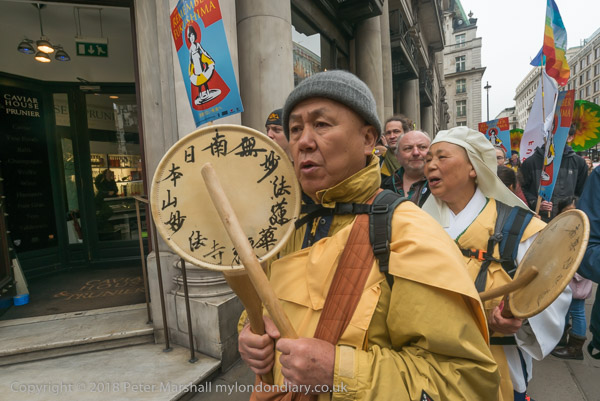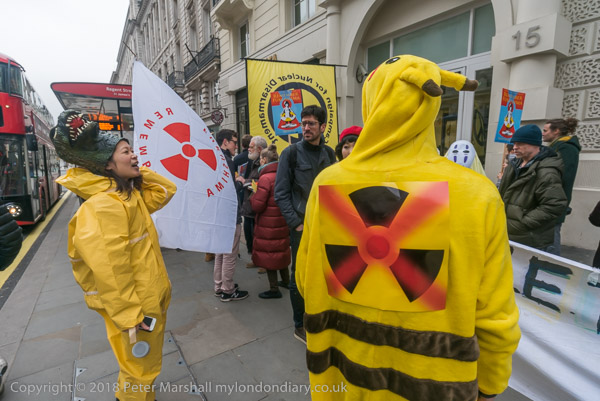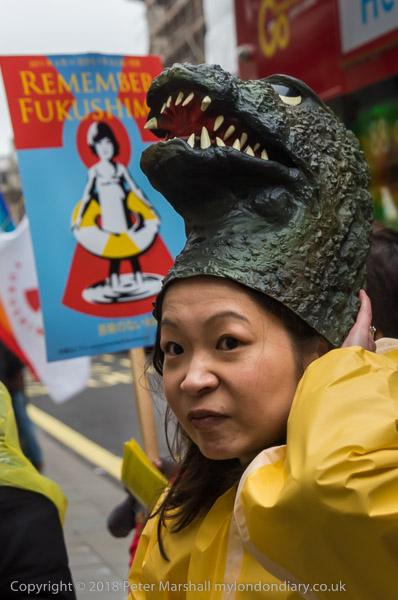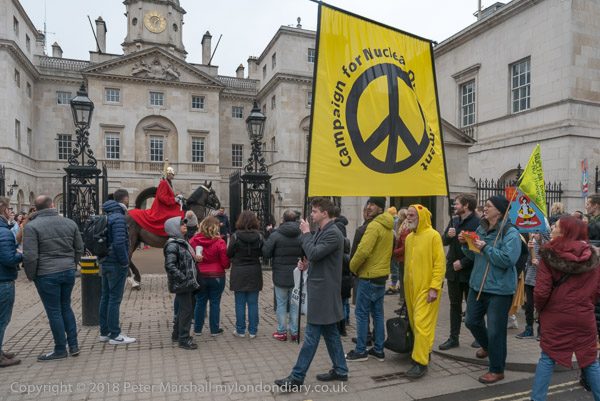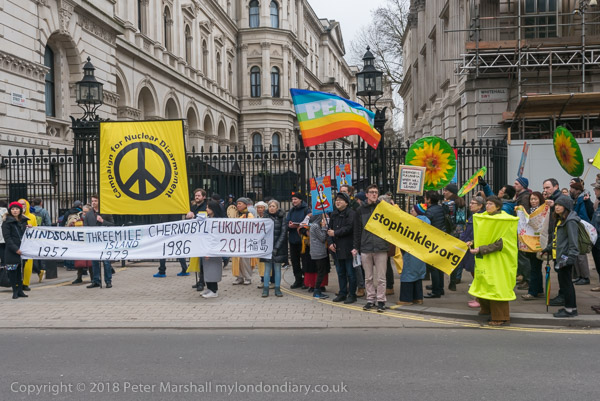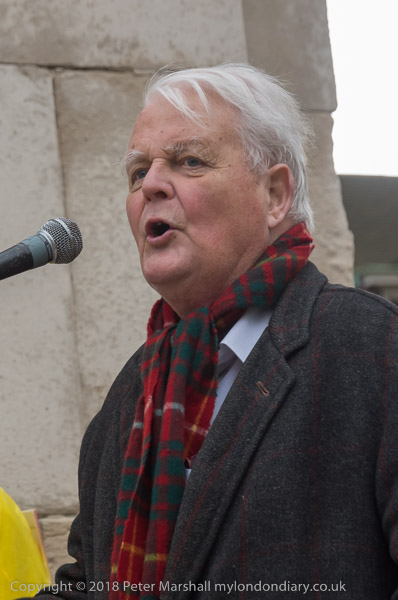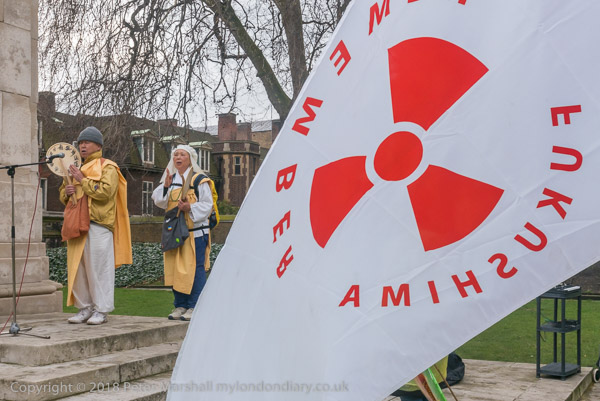On Saturday 24th January 2015, eight years ago, I photographed three protests against the replacement of our so-called independent nuclear deterrent, Trident with new nuclear submarines and missiles and Occupy Democracy asserting the right to protest and challenging the attempt by then London Mayor Boris Johnson to prevent protests in Parliament Square.
Christian CND against Trident Replacement – St Martins-in-the-Fields to Whitehall
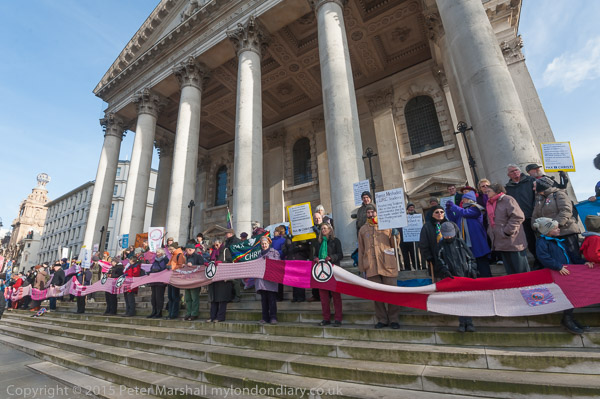
I began work at St Martin-in-the-Fields in Trafalgar Square with a Christian CND service. Thet held a long piece of the seven mile knitted pink peace scarf which had been joined together the previous August between the UK atomic bomb factories at Burghfield and Aldermaston on Nagasaki Day in a protest against the senseless waste of £100bn in replacing Trident missiles, which would clearly breach the nuclear non-proliferation treaty.
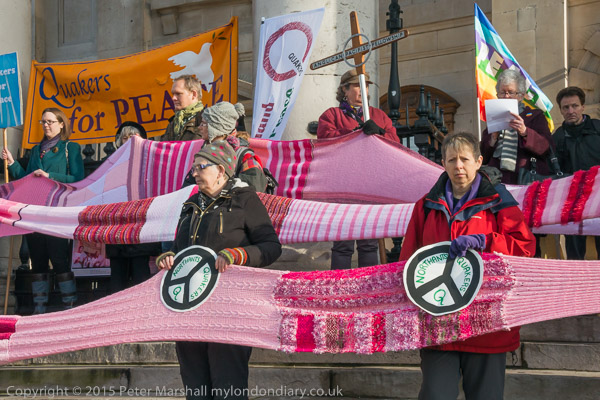
CND has since revised the figure of the costs of this senseless programme, which was stated by the defence minister in the parliamentary debates and in the November 2015 National Security Strategy and Strategic Defence and Security Review to be £31 billion. This turned out to be simply the estimate for the four new submarines. Using government figures CND later calculated the total cost to be £205 billion, well over a year’s total spending on the NHS. And of course like all defence programmes it will end up costing considerably more. Of course cost is not the main reason why people oppose nuclear weapons but this is an entirely senseless waste of resources that should be put to better use.
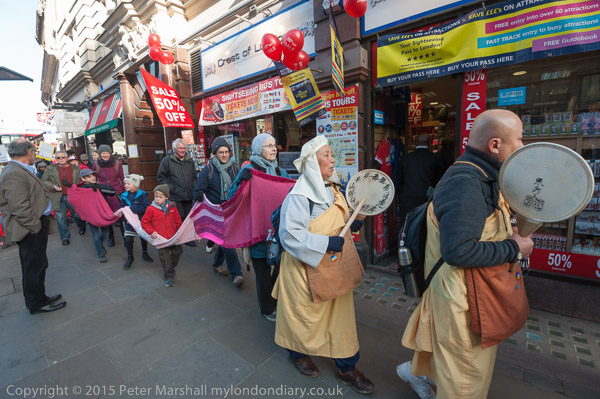
After their brief service they walked with the part so the scarf to the main CND protest against Trident replacement outside the Defence Ministry.
Christian CND against Trident Replacement
Wrap Up Trident’ surrounds Defence Ministry – Whitehall
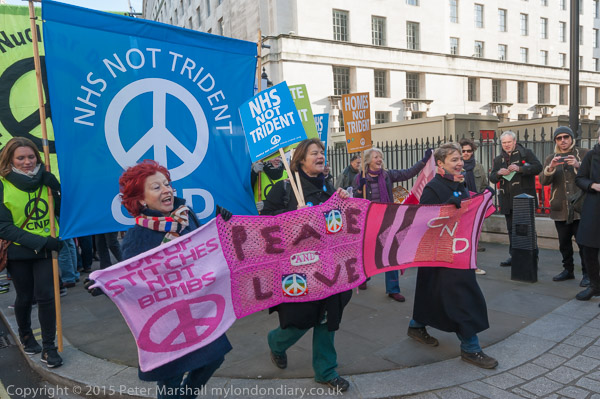
Several thousand CND supporters met at the Defence Ministry before surrounding the block with a knitted peace scarf and then moving off for a rally opposite the Houses of Parliament calling for the scrapping of the UK’s Trident missiles.
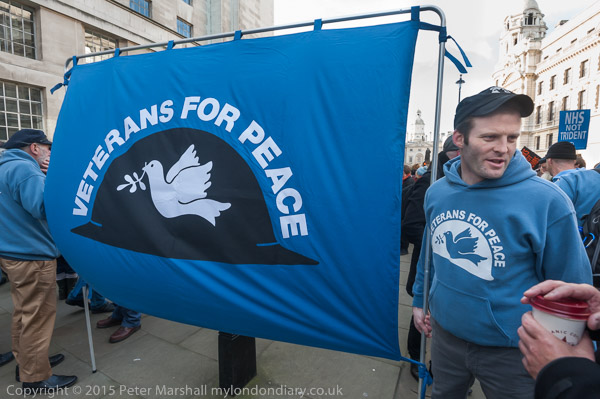
A group held the front of the scarf outside the Ministry of Defence building in Horseguards Avenue and then led off down Whitehall, left into Bridge St and left again up the Embankment and back to the MOD. While the leaders set off with the scarf at a cracking pace, gaps soon developed further back as those adding lengths from the many rolls of scarf were unable to keep up. So while there was far more scarf than needed to wrap the whole block – and it went back and forth on the river side of the ministry – it may never have entirely joined up completely.
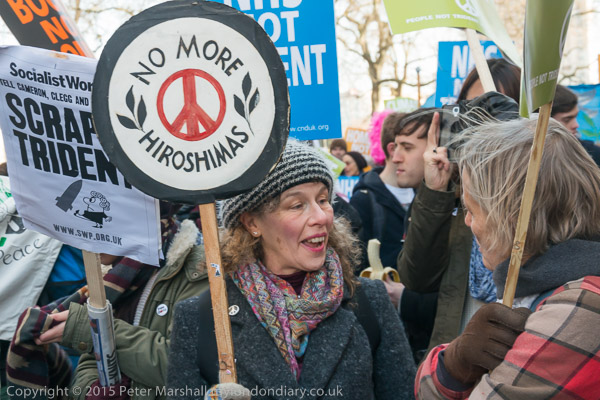
When the leading group arrived back at the MOD there where certainly people spread out along the whole of the course holding parts of the knitting, and most seemed at a loss of what they were supposed to do next. Eventually the message came for them to walk on and take their pieces of knitting back to the MOD.
Here the knitted and crocheted lengths of scarf were rolled up. Rather than being wasted most of it was later turned into blankets for refugees, with just a few of the more interesting lengths being retained for further protests and displays.
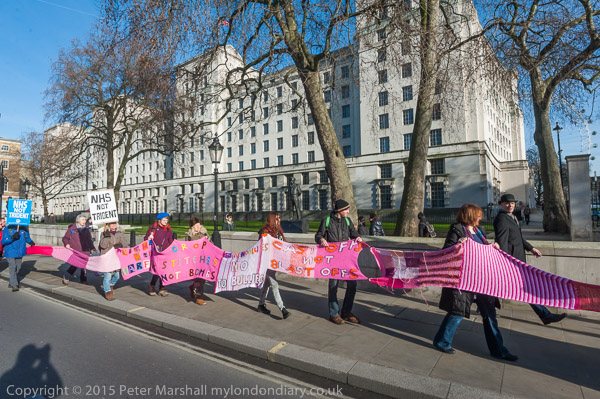
The CND supporters then marched the short distance down Whitehall and Parliament Street and on to Old Palace Yard where they were to hold a rally.
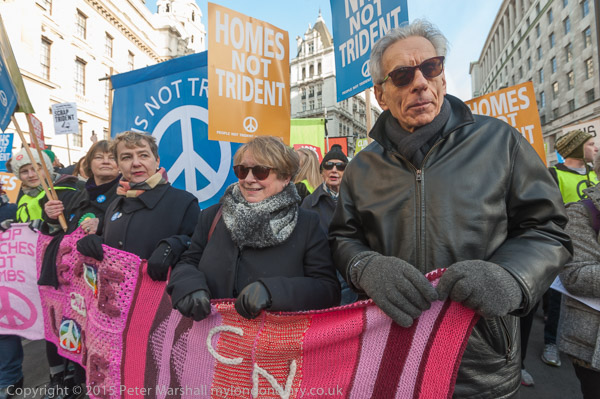
Many more pictures at ‘Wrap Up Trident’ surrounds Defence Ministry.
CND Scrap Trident rally at Parliament – Old Palace Yard,
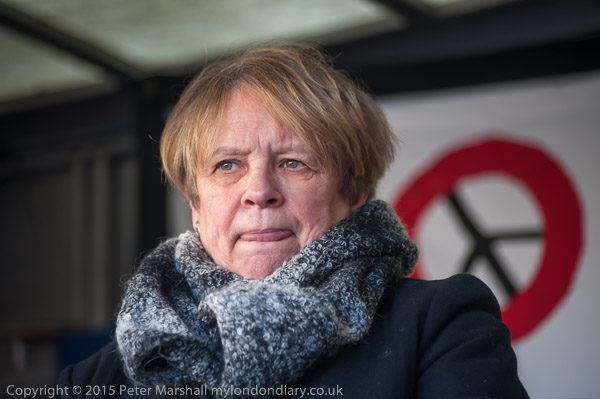
Among the speakers were at the rally were Lindsay German,
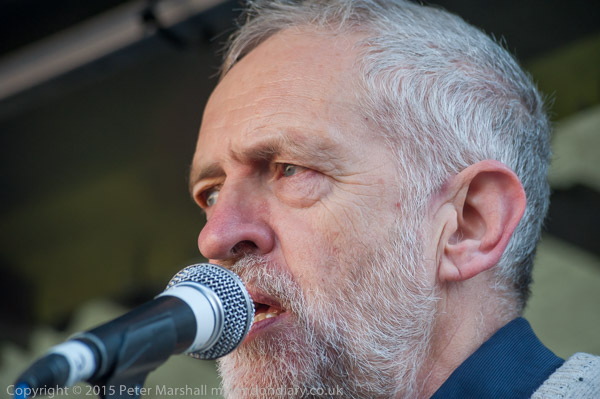
Jeremy Corbyn, Labour MEP Julie Ward, Shahrar Ali, the Deputy Leader of the Green Party,
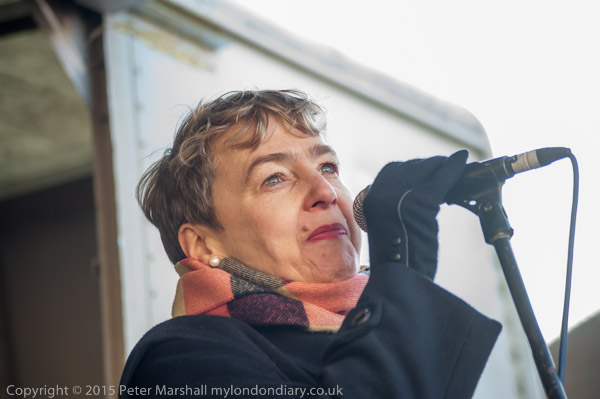
Kate Hudson and
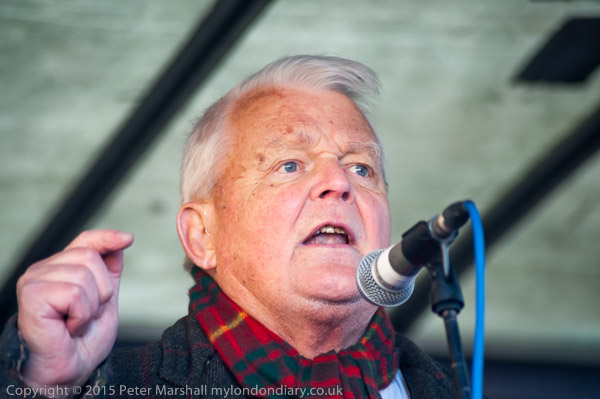
Bruce Kent of CND,
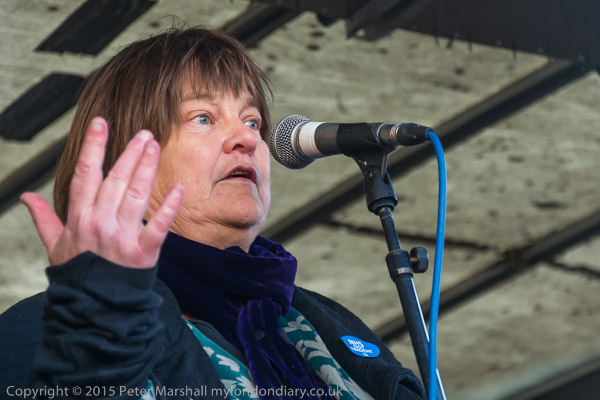
Rebecca Johnson, an internationally-recognized expert on nuclear disarmament and non-proliferation,

Heather Wakefield of UNISON, the Rt Revd Alan Williams, Bishop of Brentwood, Khalil Charles from the Muslim Association of Britain, Ben Griffin, of Veterans for Peace,
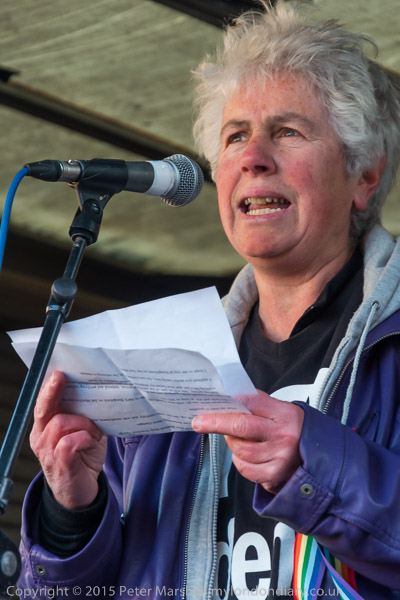
and Angie Zetter, who thought up the idea of the peace scarf.

The rally ended with a new song composed for the occasion by Leon Rosselson. There are more pictures including all the speakers and those in the crowds at the rally at CND Scrap Trident rally at Parliament.
Occupy defy GLA ban on Democracy – Parliament Square
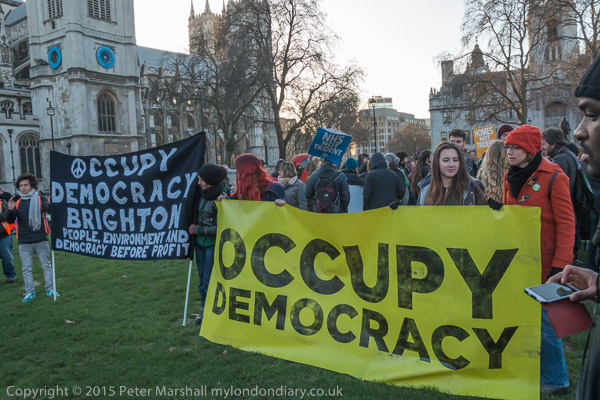
As people streamed away from the CND Trident protest, several hundred supporters of Occupy Democracy most of whom had been at the CND protest walked on to the grass of Parliament Square to hold discussions on foreign relations and war as the GLA private security guards (Heritage wardens) and police watched.
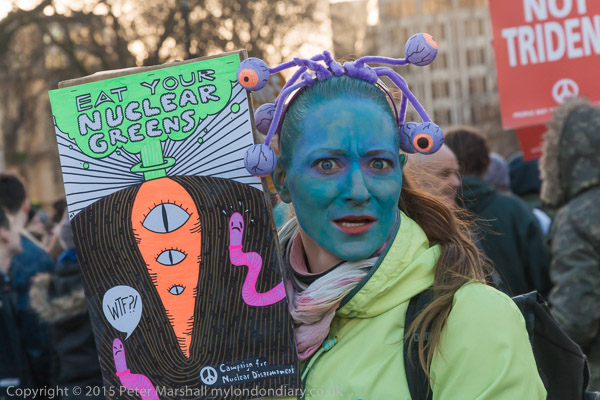
This was one of a series of monthly events in which Occupy are asserting the right to protest and challenging the attempt by London Mayor Boris Johnson to prevent protests in Parliament Square.
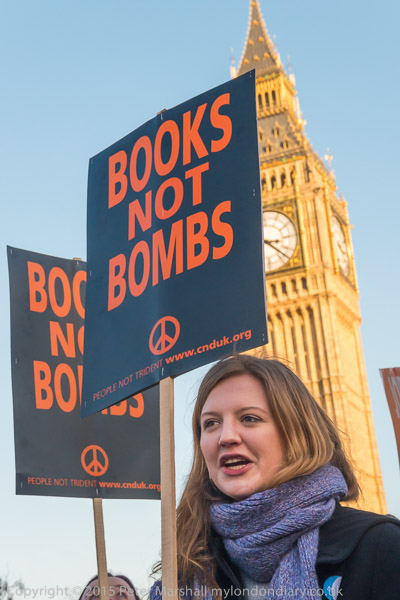
Police and the Mayor’s ‘Heritage Wardens’ watched the protest. I followed the wardens as they went across to the police and asked them to take action to stop the protest. Police lacked the officers needed to take effective action and if they had tried to do so many more of those leaving the CND protest would have joined those on the square. They told the wardens that the protesters would eventually leave of their own accord, which apparently they did a few hours later.
More pictures at Occupy defy GLA ban on Democracy.
